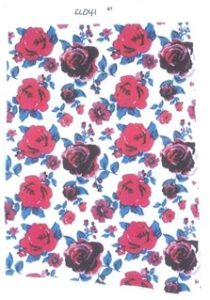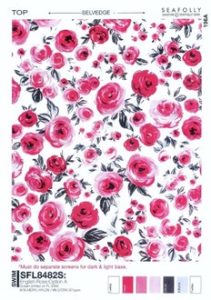aldi imitation pulls the rug out from under designers
There can be a fine line between legal and illegal copying of products. Often, this manifests itself in stories of creative small businesses being heartbroken by a large corporate copying/being inspired by their products.
examples of inspiration
Last week, it was Byron Bay picnic rug label Wandering Folk, finding similar boho-style rugs being sold by Aldi at a fraction of the price. A couple of years ago, Target was accused of copying the children’s koala plates designed by another small business, Emondo Kids in Queensland. Dig deeper and you will find plenty more such stories.
limits to IP protection
From a legal perspective, there are limits to the creative endeavours that can protected. The default position is that in order to be protected, a creative endeavour has to fall within the scope of protection of one of the IP laws. The vibe is simply not enough.
In the context of the Wandering Folk picnic rugs, there are two separate elements at issue:
- the design of the fabric, which is hand-drawn and then printed onto the rug; and
- the physical shape and configuration of the rug, including the tassels at the corners and the design when the rug is rolled up (complete with the shoulder strap), which is common to all the rugs.
the fabric pattern: copyright
The hand-drawn design of the fabric is an artistic work within the meaning of the Copyright Act 1968. Unauthorised reproduction of a substantial part of such an artistic infringes the copyright therein.
The difficulty for Wandering Folk is that while the Aldi rugs capture the same look and feel, the designs are actually quite different. In the words of Justice Dodds-Streeton on Seafolly Pty Ltd v Fewstone Pty Ltd (at para 235):
“Copyright does not protect subject matter, information, techniques or methods. Nor does it protect ideas or concepts, as opposed to the form in which they are expressed.”
And further (at para 260):
“[C]opyright … protects the “look and feel” of a work only to the extent that it is represented by identifiable elements of expression in a material form.”
In that case, the court looked in detail at the similarity and difference between Seafolly’s fabric designs used on swimsuits (left), and Fewstone’s fabric designs (right):

The reproduction was not exact. However, Her Honour held (at para 346) that the elements and combination taken from Seafolly’s English Rose print comprised a qualitatively substantial part, so that there was infringement. By contrast, at least based on the comparison images shown in the news articles (which presumably show those designs of greatest similarity) Aldi has merely replicated a border around the edge of the rug and otherwise reproduced the vibe without reproducing any particular design elements.
shape and configuration: design copyright overlap
In relation to the physical shape and configuration of the Wandering Folk picnic rug, a major impediment to protection is a little-known part of the Copyright Act, commonly referred to as the design copyright overlap.
The Designs Act 2003 protects designs in respect of products. These are visual features in relation to the product, including the shape, configuration, pattern, and ornamentation of the product.
In a potential trap for designers, once a design has been industrially applied, the designs copyright overlap means that the copyright in that design can no longer be protected. Industrial application occurs when 50 reproductions are made but can happen sooner in the right circumstances. Once copyright protection is lost, the designer must rely on registration under the Designs Act 2003. It is worth noting that there is an exception for works of artistic craftsmanship, which do not lose their copyright protection, but this is unlikely to apply to these picnic rugs.
Historically, this loss of copyright protection has been a trap for designers, as they needed to seek design registration before publicising their designs. That changed with amendments to the Designs Act that took effect on 10 September 2021. Now, if the design was disclosed after 11 September 2021, then the designer still has 12 months in which to apply for design registration. This won’t help Wandering Folk, which launched its products in 2015. But it will allow new designs to be tested in the market first before designers are required to seek design registration in order to enjoy protection.
the take away: don’t sweep design protection under the rug
So, what should designers of such products do?
- If possible, register a design in respect of the visual features of their product, being mindful of the limited post-disclosure window to do so.
- Build a strong brand for their product, which not only helps the products get recognised but allows premium prices to be commanded. That brand should be protected by trade mark registration.
- Continue to innovate in form and function, in order to maintain a premium market position and maintain the strong brand. Even if some designs get copied, there will always be a premium-priced market for the latest and freshest products.
The Macpherson Kelley IP team can help you with all of your design and trade mark protection needs, as well as vetting new designs or trade marks before use and protecting the IP if infringement has occurred.
The information contained in this article is general in nature and cannot be relied on as legal advice nor does it create an engagement. Please contact one of our lawyers listed above for advice about your specific situation.
stay up to date with our news & insights
aldi imitation pulls the rug out from under designers
There can be a fine line between legal and illegal copying of products. Often, this manifests itself in stories of creative small businesses being heartbroken by a large corporate copying/being inspired by their products.
examples of inspiration
Last week, it was Byron Bay picnic rug label Wandering Folk, finding similar boho-style rugs being sold by Aldi at a fraction of the price. A couple of years ago, Target was accused of copying the children’s koala plates designed by another small business, Emondo Kids in Queensland. Dig deeper and you will find plenty more such stories.
limits to IP protection
From a legal perspective, there are limits to the creative endeavours that can protected. The default position is that in order to be protected, a creative endeavour has to fall within the scope of protection of one of the IP laws. The vibe is simply not enough.
In the context of the Wandering Folk picnic rugs, there are two separate elements at issue:
- the design of the fabric, which is hand-drawn and then printed onto the rug; and
- the physical shape and configuration of the rug, including the tassels at the corners and the design when the rug is rolled up (complete with the shoulder strap), which is common to all the rugs.
the fabric pattern: copyright
The hand-drawn design of the fabric is an artistic work within the meaning of the Copyright Act 1968. Unauthorised reproduction of a substantial part of such an artistic infringes the copyright therein.
The difficulty for Wandering Folk is that while the Aldi rugs capture the same look and feel, the designs are actually quite different. In the words of Justice Dodds-Streeton on Seafolly Pty Ltd v Fewstone Pty Ltd (at para 235):
“Copyright does not protect subject matter, information, techniques or methods. Nor does it protect ideas or concepts, as opposed to the form in which they are expressed.”
And further (at para 260):
“[C]opyright … protects the “look and feel” of a work only to the extent that it is represented by identifiable elements of expression in a material form.”
In that case, the court looked in detail at the similarity and difference between Seafolly’s fabric designs used on swimsuits (left), and Fewstone’s fabric designs (right):

The reproduction was not exact. However, Her Honour held (at para 346) that the elements and combination taken from Seafolly’s English Rose print comprised a qualitatively substantial part, so that there was infringement. By contrast, at least based on the comparison images shown in the news articles (which presumably show those designs of greatest similarity) Aldi has merely replicated a border around the edge of the rug and otherwise reproduced the vibe without reproducing any particular design elements.
shape and configuration: design copyright overlap
In relation to the physical shape and configuration of the Wandering Folk picnic rug, a major impediment to protection is a little-known part of the Copyright Act, commonly referred to as the design copyright overlap.
The Designs Act 2003 protects designs in respect of products. These are visual features in relation to the product, including the shape, configuration, pattern, and ornamentation of the product.
In a potential trap for designers, once a design has been industrially applied, the designs copyright overlap means that the copyright in that design can no longer be protected. Industrial application occurs when 50 reproductions are made but can happen sooner in the right circumstances. Once copyright protection is lost, the designer must rely on registration under the Designs Act 2003. It is worth noting that there is an exception for works of artistic craftsmanship, which do not lose their copyright protection, but this is unlikely to apply to these picnic rugs.
Historically, this loss of copyright protection has been a trap for designers, as they needed to seek design registration before publicising their designs. That changed with amendments to the Designs Act that took effect on 10 September 2021. Now, if the design was disclosed after 11 September 2021, then the designer still has 12 months in which to apply for design registration. This won’t help Wandering Folk, which launched its products in 2015. But it will allow new designs to be tested in the market first before designers are required to seek design registration in order to enjoy protection.
the take away: don’t sweep design protection under the rug
So, what should designers of such products do?
- If possible, register a design in respect of the visual features of their product, being mindful of the limited post-disclosure window to do so.
- Build a strong brand for their product, which not only helps the products get recognised but allows premium prices to be commanded. That brand should be protected by trade mark registration.
- Continue to innovate in form and function, in order to maintain a premium market position and maintain the strong brand. Even if some designs get copied, there will always be a premium-priced market for the latest and freshest products.
The Macpherson Kelley IP team can help you with all of your design and trade mark protection needs, as well as vetting new designs or trade marks before use and protecting the IP if infringement has occurred.








